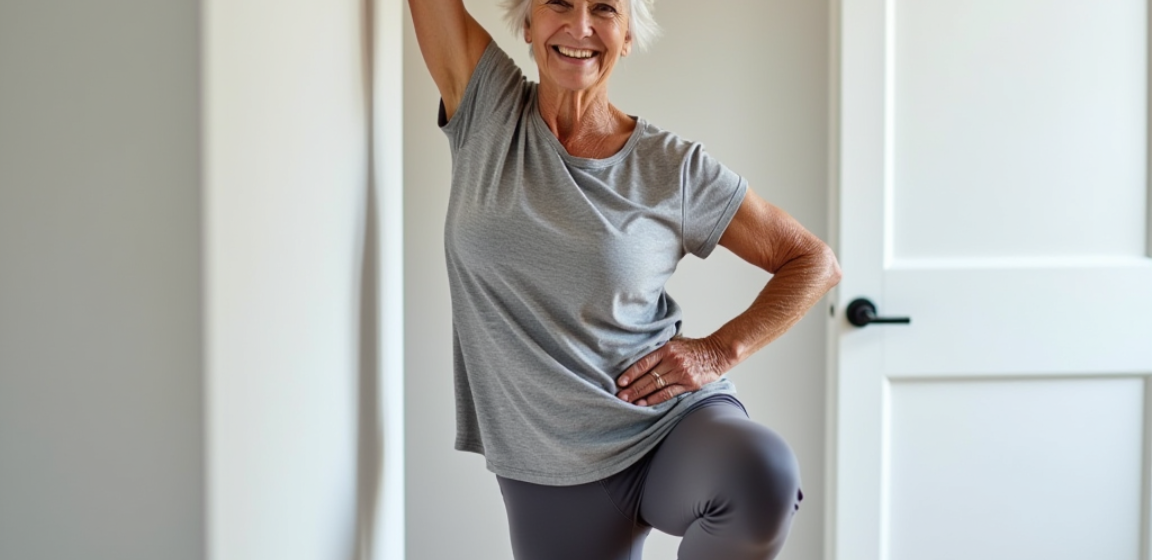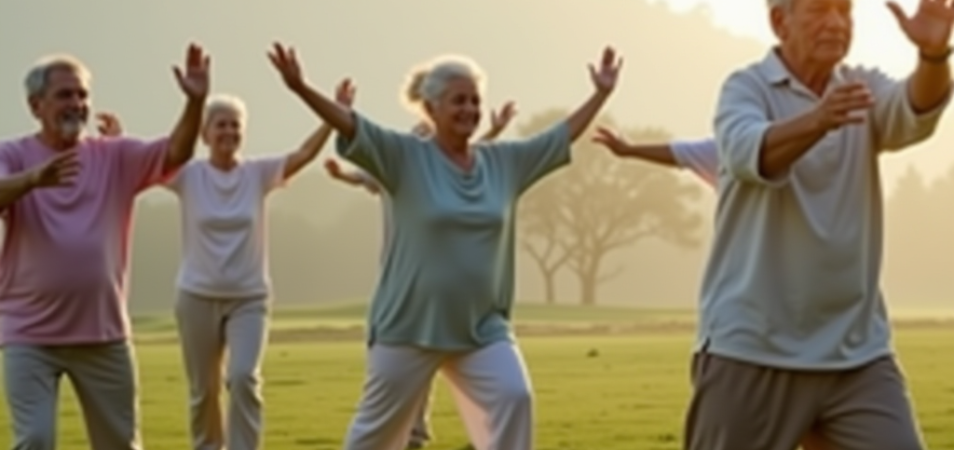Shoulder Rehab
Balance Exercises to Prevent Falls: A Seniors Guide
Falls are a top concern after 65, but simple gait training can build stability fast.

11 min. read -
August 21, 2025
Falls are a silent thief, robbing seniors of confidence and independence faster than you'd think. Did you know that 1 in 4 Americans aged 65 and older experiences a fall each year, making it the leading cause of both fatal and non-fatal injuries in this group?
In 2023 alone, over 41,000 older adults lost their lives to fall-related injuries, with rates climbing steadily over the past decade.
But here's the empowering truth: you don't have to accept this as fate. Targeted balance exercises can slash your fall risk by up to 25-30%, boosting stability, strength, and that all-important sense of security.
In this guide, we'll explore easy, at-home routines tailored for seniors – no fancy equipment needed. Whether you're just starting or looking to level up, these steps can help you stay upright and active.
Why Falls Happen in Seniors (And How Balance Training Can Help)
As we age, our bodies undergo subtle shifts: muscle mass dips (sarcopenia), inner ear balance systems weaken, vision sharpens less, and medications can add dizziness to the mix. Add in cluttered homes or uneven sidewalks, and a simple trip turns risky. The fallout? Not just bruises, but fractures, hospital stays, and a fear of moving that leads to isolation.Enter balance training: it's more than wobbling on one foot – it's about rewiring your neuromuscular system for better proprioception (your body's position sense), core strength, and quick reactions.
Studies show these exercises not only cut fall odds but also reduce injury severity if a tumble does occur, while enhancing mobility and mental well-being.
The secret? Consistency over complexity. Let's dive into five practical exercises you can weave into your day.
Master the Sit-to-Stand Transition
This everyday move is a powerhouse for building leg strength and dynamic balance – think of it as fall-proofing your morning coffee routine. Weak quads and glutes make rising from chairs a hazard, but practicing this strengthens them while improving coordination.
How-to: Sit in a sturdy chair with feet flat, hip-width apart. Scoot to the edge, lean forward from the hips, and stand up slowly using your legs (not arms). Pause at the top, then lower back down with control. Aim for 8-10 reps, 2-3 times daily. Hold the chair arms for support if needed. Over weeks, this can enhance stability by 20%, per fitness experts.
Pro tip: Add a "squeeze" in your glutes at the top for extra core engagement.
Practice Heel-Toe Walking
Channel your inner tightrope walker with this low-impact gem that hones ankle stability and gait – crucial since poor walking patterns contribute to 40% of senior falls. It mimics real-life navigation, training your brain and body to sync up.
How-to: Stand tall in a hallway or near a wall for safety. Place one foot directly in front of the other (heel to toe), like walking a line. Take 10 steps forward, then back. Keep arms out for balance or lightly touch the wall. Do 2-3 sets. If unsteady, shorten the line or use a spotter. This exercise boosts proprioception, reducing sway and fall risk effectively.
Fun twist: Pretend you're on a balance beam during your favorite show.
.png)
.png)

Try Single-Leg Stands with Support
Don't fear the "flamingo" pose – this targets hip stabilizers and vestibular balance, key for catching yourself mid-stumble. It's gentle yet transformative, especially for those with mild instability.
How-to: Hold onto a counter or chair back. Shift weight to one leg, lifting the other foot 6 inches off the ground (knee bent). Hold for 10-20 seconds, gaze forward. Switch sides; repeat 3 times per leg. Build to unassisted holds as confidence grows. Research links this to a 15-25% drop in falls by fortifying quick-recovery muscles.
Breathe steadily – tension is the enemy!
Incorporate Gentle Tai Chi Flows
Tai Chi isn't just serene slow-motion – it's a proven fall-fighter, blending balance, flexibility, and mindfulness to improve overall equilibrium. Ideal for seniors, it reduces fear of falling while enhancing joint mobility.
How-to: Start with the basic "wave hands like clouds": Stand with feet shoulder-width, knees soft. Shift weight side to side while circling arms gently overhead, as if parting clouds. Flow for 5 minutes, following free online videos. No rush – it's about smooth transitions. Programs like this can cut fall rates by 43% in groups.
Join a local class for community vibes, or go solo in your living room.
Build Leg and Core Power with Marching in Place
High knees aren't just for athletes – marching strengthens hip flexors and core, countering the muscle loss that ups fall odds after 60. It's cardio-light and super accessible.
How-to: Stand tall (hold a chair if needed). Lift one knee toward hip height, then alternate like a soldier march. Pump arms opposite for full-body sync. March for 1-2 minutes, 2-3 times a day. Add variety with side steps. This duo of strength and rhythm can enhance endurance, slashing injury risks by building resilience.
Track your "march miles" for motivation!
Wrapping It Up:
Step Confidently into StabilityFalls may be common, but they're not your destiny – with these balance exercises, you're reclaiming control, one steady step at a time. From sit-to-stands to serene Tai Chi, start with what feels right and build gradually; even 10 minutes daily yields big wins. Pair them with home tweaks like clear pathways and good lighting for a full defense.
Remember, if dizziness or pain crops up, chat with your doctor or a physical therapist – personalized tweaks make all the difference. What's your first balance challenge? Share in the comments, and here's to many more sure-footed adventures ahead!

